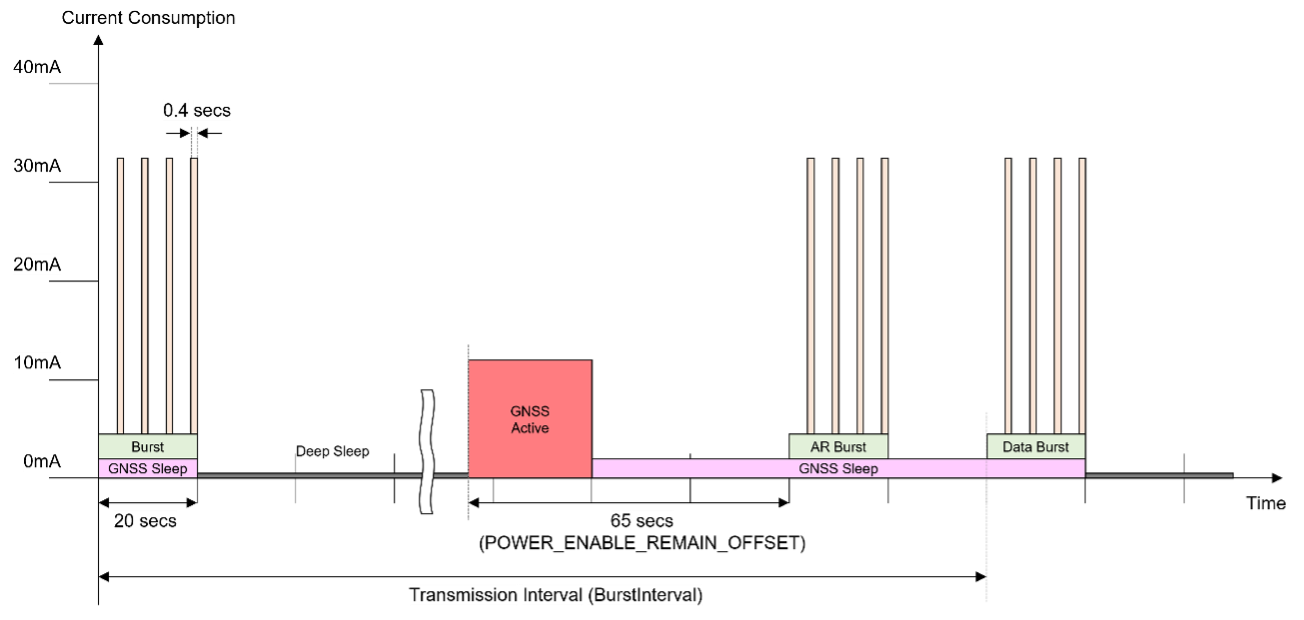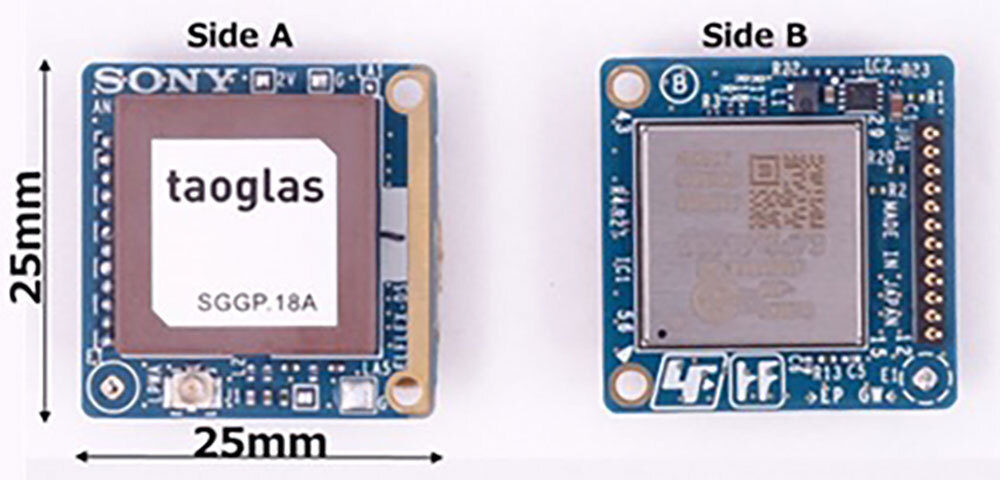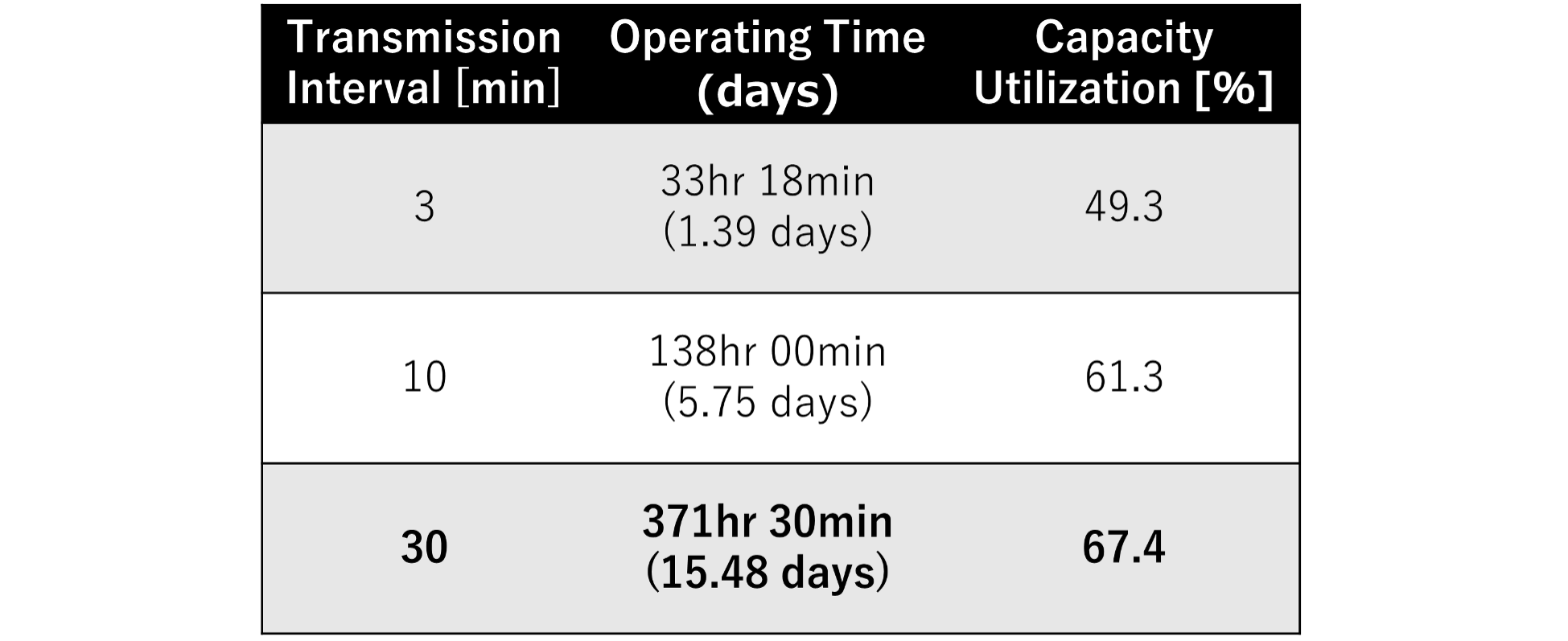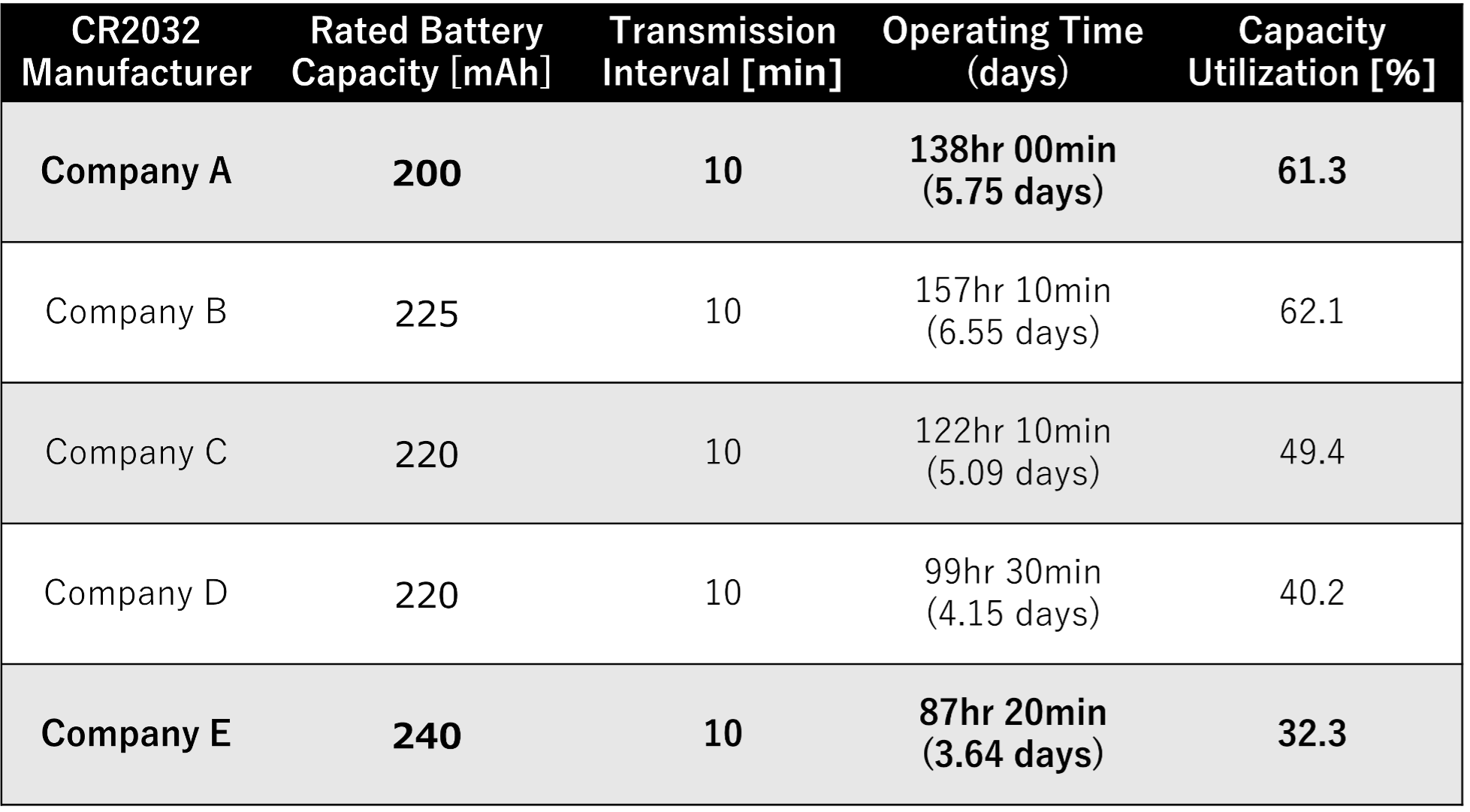Single “coin battery” delivers continuous transmission for over two weeks
- Realization of small wireless trackers with low-power ELTRES –
Note: This article is an English translation of the Japanese blog post (https://eltres-iot.jp/blog/blog-043/) from April 21, 2023.
Coin batteries, such as the CR2032, are used in a variety of devices because they are small, lightweight and inexpensive batteries that can be easily obtained. However, coin batteries are mainly suitable for small devices that consume less than a few milliamps of current. When they are used in devices that consume larger amounts of current, the batteries quickly become severely depleted and run out before being able to fully draw the rated battery capacity. Since wireless IoT devices use a large current, such as several tens of milliamps or more when transmitting wirelessly, care must be taken to avoid battery drain when using coin batteries.
In this article we report on an experiment where the low power consumption characteristic of ELTRES was used to draw out the capacity of the coin cell battery by appropriately setting the transmission interval. We confirmed operation for more than two weeks using only a single coin cell battery.
Current Consumption of the ELTRES Module
As a starting point, we measured the battery life when ELTRES module CXM1501AGR was set to operate with GNSS reception on continuously and the LPWA transmission interval set at 3 minutes. The result was a battery life of about 3 hours and 20 minutes. The battery capacity utilization (that is the ratio of the total amount of current that could actually be used to the rated battery capacity) was only 14.6%. When considering a use case such as wireless tracker, this is not a very long time.
Next, we used the ultra-low power mode known as “Deep Sleep” of ELTRES to see how long a single coin cell battery could last.
Coin battery capacity utilization decreases severely when running a large current (for coin batteries), but recovery of the battery can be expected by providing a “hibernation period” during which little current is taken out.
The current consumption of the operating mode used in this evaluation is shown in Figure 1.

Figure 1. Schematic of the current consumption profile of CXM1501AGR used in this experiment
A single ELTRES transmission consists of a pair of network management information (AR Burst) and user data (Data Burst). “Deep Sleep” is the time between each transmission burst.
Since the Deep Sleep state only consumes an ultra-low current of (typically) 0.6 µA, the capacity of the coin cell battery can be expected to recover during this period.
Before each ELTRES transmission, the module wakes up from the Deep Sleep state and starts to receive the GNSS signal in the “GNSS Active” state. After obtaining the necessary parameters for transmission, the GNSS part quickly goes to sleep again in the “GNSS Sleep” state to reduce current consumption.
Note that in this experiment, the GNSS operation mode (POW _ MODE) 3 of CXM1501AGR is used. This mode is available with firmware version RA2601 or later. For details on the current consumption, please refer to the CXM1501AGR data sheet and Application Manual.
Experimental Conditions
The operating conditions were as follows, with a view to the use case of operating as a wireless tracker.
•The coin cell battery uses the easily available CR 2032 (φ 20.0 x 3.2 mm, 2.8 g)
•Room temperature (25 degrees Celsius)
•Send position coordinates acquired by modules built-in GNSS function
Figure 2 shows the main board used for the experiment, with the GNSS antenna on Side A and the CSM1501AGR on Side B.

Figure 2. ELFLEX-DS substrate. GNSS antenna on Side A, CXM1501AGR module on Side B
Evaluation Results
Table 1 shows the results of transmitting every 3, 10 and 30 minutes. In calculating battery capacity utilization, we use the rated battery capacity published by the manufacturer.

Table 1. Operating Time and Battery Capacity Utilization
With a transmission interval of 3 minutes, the result was a battery life of 33 hours and 18 minutes (1.39 days), that is we were able to increase usage time by about 10 times and increase capacity utilization by about 3 times compared with continuous operation.
In addition, an operation time of 371 hours and 30 minutes (15.48 days) was achieved when the transmission interval was set to every 30 minutes. The capacity utilization of approximately 67% achieved this case is high for LPWA transmissions using coin batteries.
As shown above, even if a large current of more than 30 mA is needed during wireless transmission, continuous operation for more than 2 weeks can be achieved with the easily available CR2032 coin battery by setting a long transmission interval and a sufficient battery recovery period using the ELTRES “Deep Sleep” state.
In addition to the Company A batteries used above, we also evaluated several manufacturer's CR2032 batteries that are currently available on the market.
Table 2 shows the results when the transmission interval is set to 10 minutes.

Table 2. Operating Time and Capacity Utilization for different CR2032 manufacturers
Although there is no significant difference in the rated battery capacity between manufacturers, we could confirm that there is a significant difference in the battery capacity utilization depending on the battery manufacturer. When using a coin battery, it is necessary to choose a battery with good performance.
Conclusion
By taking advantage of the ultra-low power operation of the ELTRES module CXM1501AGR, we were able to confirm with the common coin cell battery CR2032 transmitting once every 30 minutes that more than 2 weeks operation for a wireless tracker can be achieved.
Contact Us
For inquiries about Sony Semiconductor Solutions Group and products / solutions, specifications, quotation / purchase requests, etc., please contact us using the Inquiry form from the button below.
